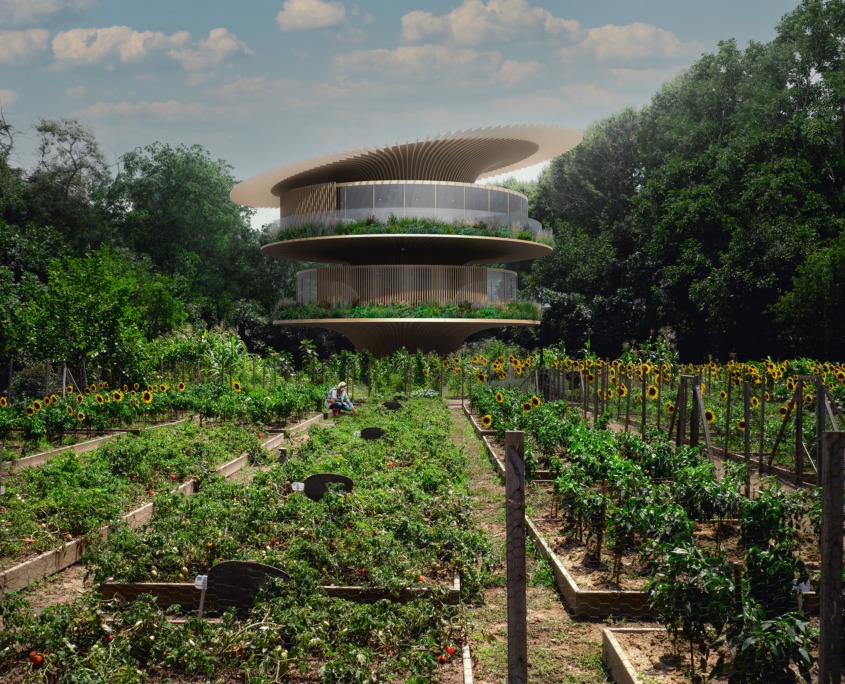Aiming higher in the affordable housing sector
by Dr. Andrew Belt
One key source cited when demonstrating the scale of the issue is the EU’s The Housing Partnership report from 2018 which revealed that more than 80 million people in Europe were ‘overburdened’ by housing costs, meaning that more than 40% of their household income is spent on their home.
More recent data suggests that the progress in removing that burden in subsequent years has been slow. For example, in JLL’s European Affordable Housing Investment Potential report published in November 2024, it was highlighted that 23 million affordable homes are needed in major European markets. JLL’s report focused on 14 European countries, including the UK, whereas the 2018 EU publication analysed the bloc’s 27 countries excluding the UK, so it’s hard to assess what movement there has been on the latter’s 80 million-plus people since then.
A huge problem requiring huge investment
Nonetheless, what is far from ambiguous is the continued large scale of the issue. The JLL report goes on to note that the major European markets under its microscope currently supply 26.4 million affordable rental homes, meaning that this figure needs to be almost doubled to address housing overburden which is mainly concentrated in cities. Over the past decade, the market has grown by just 1%.
Unmet demand is highest in Germany (5.6 million), the UK (3.9 million) and France (2.6 million). To provide these homes, private investors and government bodies would have to invest EUR 5.3 trillion, the report goes on to state. More generally, recent rental growth has outstripped wage growth, putting further pressure on housing affordability.
So, how well-equipped is government and private investment to address this?
Looking purely at a governmental level, the picture is not good. As the report highlights, in 80% of major European countries, government housing spend as a share of GDP has not increased over the last decade. Over the same time, the number of households grew by approximately 7%, or 13.5 million, in the UK and the EU.
Private investment into affordable housing, however, is growing. Institutional investors currently account for just 0.3% of the affordable sector, but investment into the sector peaked at EUR 2.6 billion in 2023, and fundraising peaked at over EUR 3 billion in the first three quarters of 2024, with EUR 14 billion raised in more than 50 specialist affordable housing funds over the past decade.
PATRIZIA’s impact investing strategy
With both government and private investors keen to make a difference, a joint approach points to a way forward.
Many governments – local, regional, national and the EU – offer incentives, such as grants, loans and tax cuts, for the private sector to invest into affordable housing. In this way, institutional investors are encouraged to get involved.
One person who keeps a keen eye on the European affordable housing landscape is Marleen Bekkers. As PATRIZIA Global Partners Head of Investments Europe and Fund Manager for PATRIZIA Sustainable Communities, Marleen is leading the company’s main investments into social and affordable housing. Here, impact refers not only to the returns achieved for investors, but also to the social and environmental benefits of the investments.
Four years after the launch of PATRIZIA Sustainable Communities, its importance has only grown and further scalable investment is planned. The strategy straddles both living and value add – two of the five growth areas PATRIZIA has identified which will grow the business to EUR 100 billion assets under management (AUM) by 2030 as part of the new mid-term strategy which the company launched last year. Therefore, for the next five years at the very least, the strategy will be pivotal.
Armed with her knowledge and experiences so far, how does Marleen see the affordable housing landscape right now? And where does PATRIZIA fit in?

Marleen Bekkers
“The need for affordable housing and greening buildings is big, and so is the investment opportunity,” Marleen says.
“There are many possibilities for us to acquire or find distressed positions and execute our business plans. As you can imagine, investing in affordable housing in communities in a sustainable way is not always easy but the investable universe in this space has grown for us.
“Given our progress so far, we have deeper experience and relationships as an impact investor. We can now speak with investors about the projects we have done, and our KPIs are further defined and proven. We are adding value from not only a financial perspective and an environmental perspective, but also from a community and neighbourhood perspective.”
Projects in progress and those to come
So far, Marleen and her team have announced four programmatic joint ventures in Ireland, the UK, in the Benelux and most recently, in Spain. This translates into six affordable and social housing projects at the moment. The approach taken by PATRIZIA is to work with local specialist operating partners on developments. This local affordable housing expertise feeds into the overarching ambition to house 7,500 people in affordable and social homes across major metropolitan areas in Western Europe.
As the JLL report highlights, the undersupply of affordable housing is a Europe-wide issue. Germany, the UK and France have the highest number of people overburdened by housing cost. A further UK deal is planned for through PATRIZIA Sustainable Communities‘ strategy, and there are plans to invest in Germany and France over time. Countries such as Spain and Ireland, where the need for affordable housing affects more than a tenth of the population, are accounted for by PATRIZIA Sustainable Communities’ strategy. In these countries, the demand is concentrated in the major cities and a joint venture has been announced in Spain, while the first homes in Dublin are getting close to completion.
Targeting returns for investors of 12%, currently the strategy is outperforming this metric. The bar is not only set high from a returns and ESG perspective because, unlike the 40% definition for overburdening commonly accepted, PATRIZIA Sustainable Communities also aims to create affordable homes where the combination of rent and in some cases energy costs falls below 35% of a household’s income.
Spotlight: New partnership in the Benelux
One of PATRIZIA Sustainable Communities’ latest programmatic joint ventures saw it team up with Revive Fund Management, with a target to invest EUR 75 million in the development of sustainable and affordable housing in the Benelux region.
The JV will focus on the conversion of depleted and obsolete office buildings into build-to-sell affordable apartments to help address the severe shortage of good quality housing in locations across the Benelux, where housing affordability is an acute issue.
Each development will aim to limit embodied carbon, enhance biodiversity and make a positive impact on local communities through social initiatives, such as fostering community engagement and wellbeing to address social isolation, which is a major issue in Belgium in particular.
PATRIZIA’s Marleen Bekkers comments: “Belgium is a country of house owners, where the rental market and the social housing market is quite small. Our aim, therefore, is to reposition old office buildings into residential buildings and individual apartments to be sold at an affordable price to people on lower-to-middle incomes. These include key workers and first-time buyers, struggling to get on the housing ladder.”
Protecting the environment and improving society
From a sustainability point of view, projects are chosen through the lens of the feasibility of achieving an EPC A rating and a zero operational carbon footprint. Independent endorsement of its sustainability credentials arrived in the form of a five-star GRESB rating with a score of 99 points (out of a possible 100) in 2024 seeing it top its peer group of residential managers – regional and global (GRESB is an independent organisation, providing a rigorous methodology and consistent framework to measure the ESG performance of individual assets and portfolios based on self-reported data).
Perhaps the hardest element of the strategy to judge is its social impact. PATRIZIA Sustainable Communities aims to advance inclusion and connectivity and with that reduce loneliness; these targets forming part of its KPIs. So, how does this more ambiguous measure translate into action?
Marleen explains: “Anytime we identify an asset, the social value framework allows us to first analyse the neighbourhood to better understand what people need and answer questions such as: who are the groups in need? What are the issues they are facing? How can we best use our community space? Or, where can our budget for community programmes be spent to have the biggest impact for this group of people?”
Principally, this relates to amenities, such as the community centre and library being developed in the project in Dublin and the open parkland and investment in local community groups in the project in Milton Keynes in the UK.
In this way, now and in future, PATRIZIA Sustainable Communities is one small part of the solution to the vast affordable housing conundrum in Europe.





